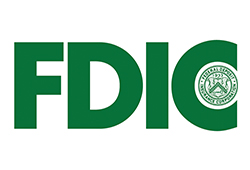 The Office of the Comptroller of the Currency (OCC) and the Federal Deposit Insurance Corporation (FDIC) issued Final Rules last month in an effort to address the “legal confusion” regarding the impact of the permissible interest when a bank transfers a loan to a third party.
The Office of the Comptroller of the Currency (OCC) and the Federal Deposit Insurance Corporation (FDIC) issued Final Rules last month in an effort to address the “legal confusion” regarding the impact of the permissible interest when a bank transfers a loan to a third party.
These Final Rules are in response to the legal uncertainty created by the Madden v. Midland Funding, LLC U.S. Court of Appeals for the Second Circuit’s decision in March 2015 (Madden decision). As LenderLaw Watch has previously reported, in the Madden decision, the Second Circuit held that assignees of a national bank were not allowed to charge interest at the rate permitted by the assignor national bank’s state. This ruling called into question the longstanding “Valid When Made” principle–that a transaction valid when made remain valid upon transfer.
On June 2, 2020, the OCC issued a final rule (OCC Final Rule) to resolve the confusion. The OCC Final Rule amends 12 CFR 7.4001 and 12 CFR 160.110 by adding a new section, stating: “Interest on a loan that is permissible under [12 USC 85 and 12 USC 1463(g)(1), respectively] shall not be affected by the sale, assignment, or other transfer of the loan.”
The OCC Final Rule concluded that because federal law, under the National Bank Act (NBA), authorizes national banks to enter into contracts, federal law also authorizes a national bank to assign its contract to a third party. Therefore, “as a matter of Federal law, banks may transfer their loans without impacting the permissibility or enforceability of the interest term.”
Similarly, on June 25, 2020, the FDIC issued a final rule (FDIC Final Rule) adopting the “Valid When Made” Doctrine. The FDIC Final Rule amends 12 CFR Part 331, providing in section 331.4(e) that: “Whether interest on a loan is permissible under section 27 of the Federal Deposit Insurance Act is determined as of the date the loan was made” and “shall not be affected by… the sale, assignment, or other transfer of the loan, in whole or in part.”
Both the OCC and the FDIC’s Final Rules clarify that the determination of whether interest on a loan is permissible is determined when the loan is made and that a bank’s transfer of a loan to a third party does not impact the validity or enforceability of that interest. However, neither Final Rule addresses the “True Lender Doctrine”–the theory that the entity who transfers the loan to a third party is the true lender.
Specifically, the OCC Final Rule notes that it does not “address which entity is the true lender when a bank transfers a loan to third party.” OCC Final Rule (emphasis added). While the FDIC Final Rule provides that “it will view unfavorably entities that partner with a State bank with the sole goal of evading a lower interest rate established under the law of the entity’s licensing State(s),” it does so without addressing the “True Lender” Doctrine.
However, the lack of clarification in the Final Rules does not mean the agencies are not seeking to clarify the “True Lender” doctrine soon. On July 20, 2020, the OCC proposed a rule (Proposed Rule) to determine who is the “true lender,” in a lending partnership. The OCC has proposed that the “true lender” is the entity who, at the date of origination, (1) is named as the lender in the loan agreement or (2) funds the loan. The deadline for comments on the Proposed Rule is September 3, 2020. If finalized this rule would resolve the uncertainty that discouraged many banks and companies from entering into partnerships to offer loans to consumers.
